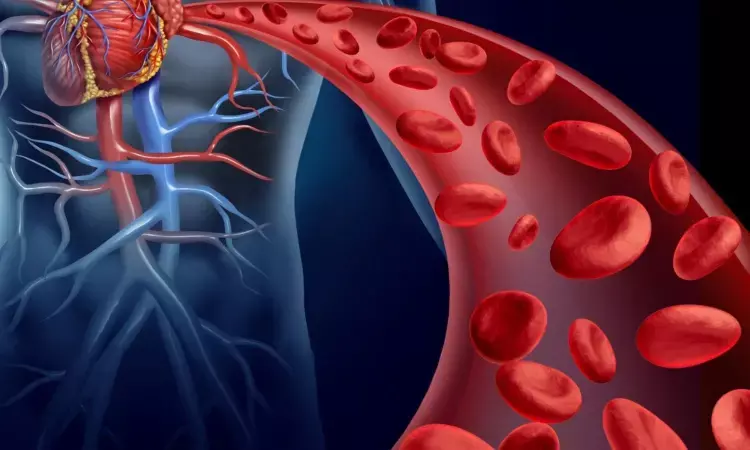- Home
- Medical news & Guidelines
- Anesthesiology
- Cardiology and CTVS
- Critical Care
- Dentistry
- Dermatology
- Diabetes and Endocrinology
- ENT
- Gastroenterology
- Medicine
- Nephrology
- Neurology
- Obstretics-Gynaecology
- Oncology
- Ophthalmology
- Orthopaedics
- Pediatrics-Neonatology
- Psychiatry
- Pulmonology
- Radiology
- Surgery
- Urology
- Laboratory Medicine
- Diet
- Nursing
- Paramedical
- Physiotherapy
- Health news
- Fact Check
- Bone Health Fact Check
- Brain Health Fact Check
- Cancer Related Fact Check
- Child Care Fact Check
- Dental and oral health fact check
- Diabetes and metabolic health fact check
- Diet and Nutrition Fact Check
- Eye and ENT Care Fact Check
- Fitness fact check
- Gut health fact check
- Heart health fact check
- Kidney health fact check
- Medical education fact check
- Men's health fact check
- Respiratory fact check
- Skin and hair care fact check
- Vaccine and Immunization fact check
- Women's health fact check
- AYUSH
- State News
- Andaman and Nicobar Islands
- Andhra Pradesh
- Arunachal Pradesh
- Assam
- Bihar
- Chandigarh
- Chattisgarh
- Dadra and Nagar Haveli
- Daman and Diu
- Delhi
- Goa
- Gujarat
- Haryana
- Himachal Pradesh
- Jammu & Kashmir
- Jharkhand
- Karnataka
- Kerala
- Ladakh
- Lakshadweep
- Madhya Pradesh
- Maharashtra
- Manipur
- Meghalaya
- Mizoram
- Nagaland
- Odisha
- Puducherry
- Punjab
- Rajasthan
- Sikkim
- Tamil Nadu
- Telangana
- Tripura
- Uttar Pradesh
- Uttrakhand
- West Bengal
- Medical Education
- Industry
Secondary stroke prevention in kids with sickle cell anemia: low-dose hydroxyurea effective option

AFRICA: According to a study published in the journal Blood, initial low-dose hydroxyurea is a lowest known effective dose for secondary stroke prevention for children with sickle cell anemia in low-income settings who do not have access to routine blood transfusion therapy.
Up to millions of people worldwide are affected by sickle cell disease (SCD).
One medication that is frequently used to treat sickle cell disease is hydroxyurea. Numerous studies have shown how effective hydroxyurea is at reducing disease pathogenesis. However, its use is constrained by a lack of agreement on the ideal dosage and the requirement for continual toxicity monitoring for myelosuppression.
"Children with sickle cell anemia and abnormal transcranial Doppler velocities who receive conventional therapy for stroke prevention in high-income countries experience a 92% relative risk decrease in strokes but must receive an initial monthly blood transfusion. Regular blood transfusion is not feasible for most children in Africa," stated Michael R DeBaunand team.
Therefore, in a phase III, double-blind, parallel-group, randomized controlled trial in children with sickle cell anemia (SCA) living in Nigeria, the authors sought to determine whether fixed oral moderate-dose hydroxyurea (20 mg/kg/day) for treatment initiation of secondary stroke prevention results in an 80% relative risk reduction of stroke or death when compared to fixed oral low-dose hydroxyurea (10 mg/kg/day).
With a targeted minimum follow-up of 3.0 years, the median participant follow-up was 1.6 years (interquartile range: 1.0–2.3). The primary end measure's incidence rates showed no clinically significant difference; hence the experiment was terminated early.
Key findings of the trial:
- In the low- and moderate-dose groups, there were a combined 6 recurrent strokes and 2 fatalities against 5 recurrent strokes and 3 deaths.
- In the low- and moderate-dose hydroxyurea therapy groups, the incidence rate ratio (IRR) of the primary outcome measure of stroke or death was 0.98 (95% CI 0.32 - 3.00), P=0.97.
- Recurrent stroke incidence rates in the low- and moderate-dose groups were 7.1 and 6.0 per 100 person-years, respectively; IRR= 1.18 (95% CI: 0.30-4.88); P=0.74.
- The median percent of medications returned as an indicator of adherence to the oral hydroxyurea medication was 3.0% in the low-dose group and 2.6% in the moderate-dose group, respectively.
- No participant's hydroxyurea treatment was discontinued due to myelosuppression.
They noted that there was a median interval of 0.8 years between the initial stroke and death.
The researchers came to the conclusion that hydroxyurea in low-resource settings is effective at preventing subsequent strokes at both low- and moderate doses.
REFERENCE
Shehu Abdullahi, Surayya Murtala Sunusi, Mohammed Sani Abba, Saifuddeen Sani, Hauwau Aminu Inuwa, Safiya Gambo, Awwal Gambo, Bilya Sani Musa, Brittany V. Covert Greene, Adetola Kassim, Mark Rodeghier, Nafiu Hussaini, Mariana Ciobanu, Muktar Hassan Aliyu, Lori C Jordan, Michael R DeBaun; Hydroxyurea for Secondary Stroke Prevention in Children with Sickle Cell Anemia in Nigeria:a Randomized Controlled Trial. Blood 2022; blood.2022016620. doi: https://doi.org/10.1182/blood.2022016620
Dr Kamal Kant Kohli-MBBS, DTCD- a chest specialist with more than 30 years of practice and a flair for writing clinical articles, Dr Kamal Kant Kohli joined Medical Dialogues as a Chief Editor of Medical News. Besides writing articles, as an editor, he proofreads and verifies all the medical content published on Medical Dialogues including those coming from journals, studies,medical conferences,guidelines etc. Email: drkohli@medicaldialogues.in. Contact no. 011-43720751


